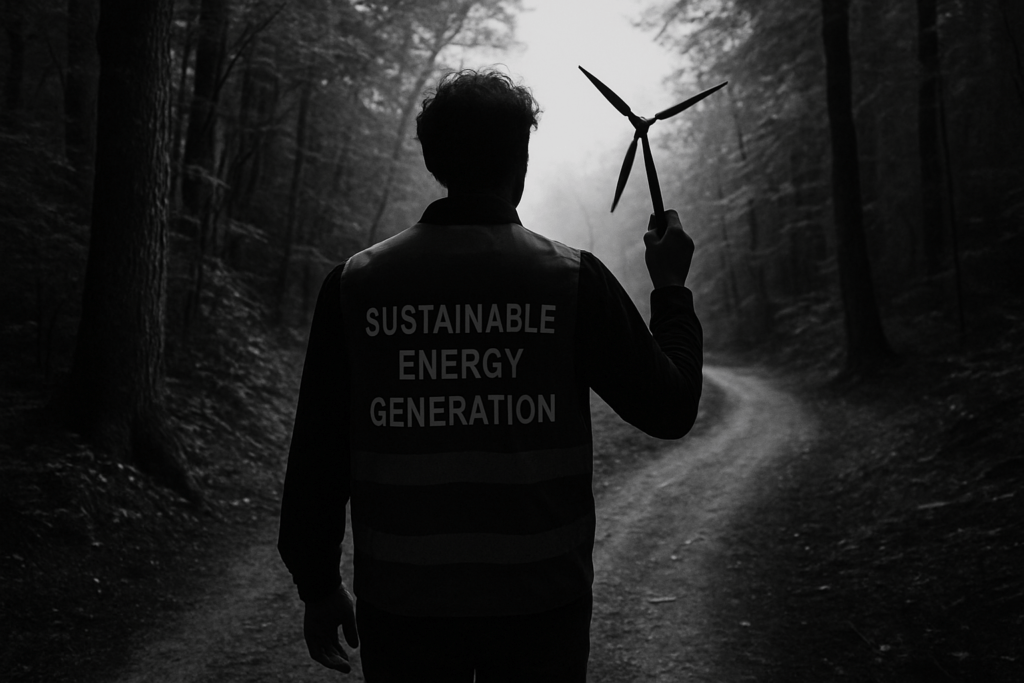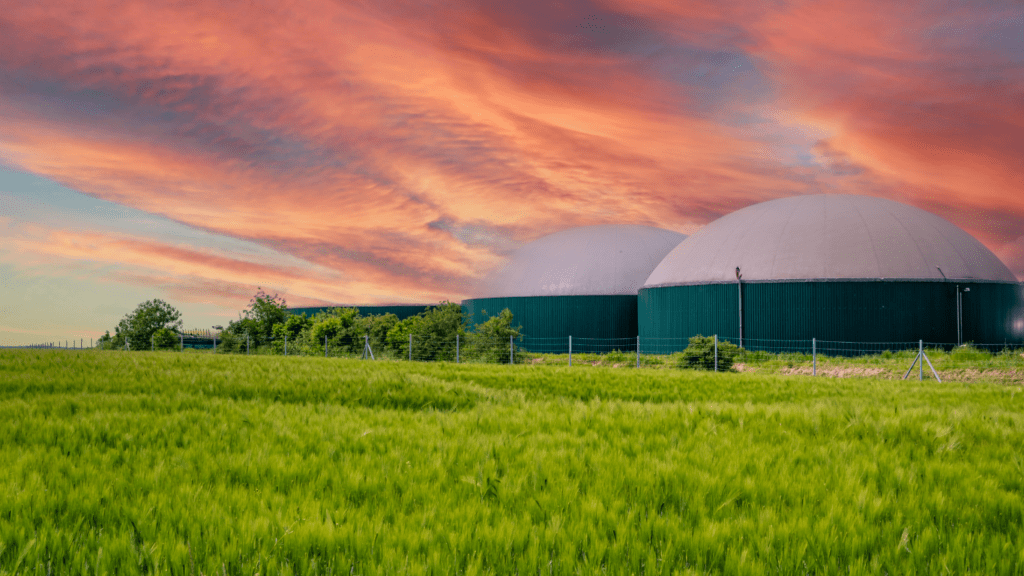Why Small Farms Are Adopting Renewable Energy
As energy costs continue to rise, small farms are increasingly turning to renewable energy to reduce dependence on conventional power sources. Sustainability is no longer just an environmental concern it’s an economic one too.
Rising Fuel and Utility Costs
With diesel prices and electric bills cutting into profits, many farmers are seeking practical solutions to stabilize their budgets.
Fuel costs for machinery and heating continue to rise unpredictably
Utility rates are especially burdensome in remote or off grid areas
Seasonal spikes add pressure to already tight operating margins
Long Term Savings and Energy Independence
One of the key benefits of renewable energy is long term cost control. By producing power on site, farms gain more flexibility and independence.
Renewable systems reduce reliance on volatile energy markets
Solar, wind, and biomass installations can lower monthly utility expenses
Energy self sufficiency reduces vulnerability to outages and supply limits
Government Support Makes It Easier Than Ever
Adopting renewable energy doesn’t have to break the bank. A growing number of programs are designed specifically to help small farms transition.
Federal and state grants can cover part of installation costs
Tax credits and low interest loans reduce upfront investment
Programs like USDA’s REAP provide specific support for agriculture based energy projects
In summary, renewable energy is becoming both accessible and essential for small scale agriculture. With the right planning and support, farmers can future proof their operations while cutting costs and supporting a cleaner planet.
Solar Power: The Go To Option
Solar power remains the most accessible and effective renewable energy option for small farms. Its scalability, ease of installation, and cost efficiency make it ideal for operations of all sizes.
Why Solar is a Smart Investment
Affordable systems: Panel prices continue to drop, making it easier for farms to install systems without breaking the bank.
Scalable setups: Whether you need just a few panels or a full rooftop array, systems can be scaled to suit your energy needs and budget.
Everyday Uses on the Farm
Solar panels can greatly reduce dependence on traditional electricity sources by supporting key agricultural systems:
Running irrigation pumps efficiently, especially in remote fields
Powering electric fences for livestock containment
Keeping cooling and refrigeration units stable for produce storage
Power When You Need It: Battery Storage Options
Solar battery storage systems enable farms to store energy for use when the sun isn’t shining. This offers:
Improved energy reliability during nighttime or overcast conditions
Reduced reliance on the grid, supporting off grid or backup operations
Long term cost savings through better energy management
Keep Panels Performing Year Round
To ensure long term performance, solar systems require occasional upkeep. Consider these maintenance tips:
Clean panels seasonally to maximize sun exposure
Inspect connections and wires for weather related wear
Monitor output with smart inverters or apps to catch dips in performance early
Learn From Real Farms
Need inspiration? Check out practical success stories and examples in the article Cost Effective Renewable Energy Options for Small Farms. These examples highlight how small farms have effectively integrated solar power to improve efficiency and lower costs.
By choosing solar, small farms not only cut energy bills but also build energy independence for the future.
Wind Turbines: When Location is Right
Wind power makes sense for small farms if the conditions line up. Micro and small scale wind turbines can be powerful additions, especially in open, windy areas with consistent gusts. These aren’t the towering giants you see in industrial wind farms. We’re talking modest size setups that can keep barns lit, feed pumps running, or even cut into overall grid reliance.
That said, wind is unreliable on its own. Which is why more farms are pairing turbines with solar. Think of it like crop rotation for your energy needs when the sun’s not out, the wind might just pick up the slack. These hybrid systems offer a steady output and reduce the need for oversized battery banks.
Before you plant a pole, check your local zoning rules. Some areas limit turbine height or restrict placement because of noise or visual concerns. Permitting can be a headache if you don’t plan ahead. But when done right, wind gives your farm an edge clean power, reduced bills, more resilience.
Pro tip: don’t guess. Use wind resource maps or consult a local installer before diving in. It’s better to find out now if your site’s a winner than after you’ve sunk money into steel and concrete.
Biomass: Waste Turned Into Power

For small farms looking to make every input count, biomass offers a low tech, high return solution. Instead of letting crop residues, animal manure, and woodchips pile up or go to waste, these materials can be repurposed into clean energy through combustion or anaerobic digestion. The result? Usable heat that doesn’t rely on fossil fuels and that most farms are already producing the raw materials for.
In real terms, biomass energy is excellent for heating spaces like greenhouses, barns, or water for animal care. A simple biomass boiler, for example, can turn manure and woodchip blends into steady, controlled heat throughout winter. Tubing systems can distribute that warmth to protect delicate crops or improve animal comfort. On the higher tech end, some operations use digesters to convert manure into biogas, which can drive generators or heating units.
The bottom line: the upfront cost of a small scale biomass heating system isn’t pocket change, but it’s manageable especially with grants or cost sharing opportunities. Operation costs tend to stay low, since the fuel supply is often farm generated. For small to medium farms producing steady organic waste, the system usually pays for itself in under five years. Even better, it’s a circular approach waste in, warmth out that adds sustainability without adding complexity.
Hydropower: Small Streams, Big Potential
Ideal for Streamside Farms
Micro hydro systems are an often overlooked yet highly effective solution for small farms located near natural streams or flowing creeks. These compact systems convert the constant movement of water into a reliable source of clean electricity.
Suitable for farms with access to steady flow water sources
Can operate independently or alongside solar/wind systems
Offers predictable energy output without the need for large infrastructure
Why Micro Hydro Works Year Round
Unlike solar or wind, hydro systems can generate electricity 24/7 rain or shine. This makes them a dependable base load energy source for farms.
Continuous power generation throughout the seasons
Minimal mechanical parts = low upkeep
Less affected by weather disruptions compared to solar or wind
Environmental Considerations
A properly installed micro hydro setup can deliver sustainable power with a relatively small ecological footprint. However, thoughtful planning is key to minimizing disruption to local waterways and wildlife.
Choose low impact turbines designed for small scale use
Monitor water usage to avoid downstream impact
Check with local environmental authorities before installation
Making Hydropower Work for You
For farms in the right location, micro hydro energy offers consistent returns with limited maintenance.
Conduct a feasibility assessment of your site
Combine with solar for a balanced off grid solution
Explore grants or funding for initial setup costs
Implementing Off the Grid Systems
Small farms aiming for energy independence often turn to off the grid solutions. These systems allow greater control over power generation and reduce reliance on traditional utilities. However, making the jump to off grid requires thoughtful design, collaboration, and maintenance.
Tailoring Systems to Farm Needs
Every farm is different. The right off grid setup depends on location, climate, operation size, and energy requirements.
Key design considerations:
Energy demand mapping: Determine peak load needs across seasons
System mix: Combine solar, wind, or micro hydro based on resource availability
Battery storage: Size appropriately for overnight or winter usage
Scalability: Build in room for future expansion as farm operations evolve
Cost Sharing & Cooperative Models
Going off grid can be cost intensive upfront. Neighboring farms can reduce this burden through collaboration.
Co op strategies include:
Joint investment in infrastructure, like large solar arrays or wind turbines
Shared battery or storage units to minimize individual costs
Community ownership models for long term shared benefit
Grant pooling to increase chances of funding approval
These models foster community resilience while expanding access to renewable solutions.
Maintenance & Scaling Tips
Off grid systems require upkeep to run efficiently, particularly in agricultural environments subject to dust, weather, and animal interference.
Best practices:
Regular system checks on all components, including panels, inverters, and storage
Keep detailed logs of performance metrics and any issues
Clean and clear panels regularly to maintain maximum energy production
Work with local technicians or train on site staff for basic troubleshooting
Plan for modular upgrades, allowing easy expansion without major redesign
By starting small and planning for the long term, small farms can implement practical off grid systems that grow with their needs and continue delivering value.
Long Term Benefits and Return on Investment
Renewable energy isn’t just a short term fix for small farms it’s a long term investment that pays off in multiple areas, from reduced costs to increased marketability and long term energy security.
Lower Operating Costs Over Time
Once the initial investment is made, many renewable systems require minimal upkeep and have very low running costs. For small farms, every dollar saved in energy expenses can be redirected toward other operational needs.
Solar and wind systems offer consistent, free energy after setup
Biomass and hydropower systems can reduce heating and utility bills significantly
Over time, energy savings often outweigh installation expenses
Harnessing Sustainability as a Selling Point
Eco conscious consumers are influencing market trends and they’re willing to support sustainable producers.
Being powered by renewables boosts your farm’s environmental credibility
Opportunities to market your products with a sustainability focus
Stronger appeal at farmers markets, local retailers, and with CSA subscribers
Energy Security in Unpredictable Markets
As traditional energy prices fluctuate and extreme weather increases, having independent power sources provides peace of mind:
Reduces dependence on utility companies or fuel supply chains
Helps maintain operations during power outages or grid disruptions
Ensures stable pricing regardless of fuel market dynamics
Learn From Real Farms
For inspiration and practical advice, explore real world examples of farms successfully integrating renewable energy systems:
Visit small farm energy options to read how others are lowering costs, improving resilience, and building greener brands.



